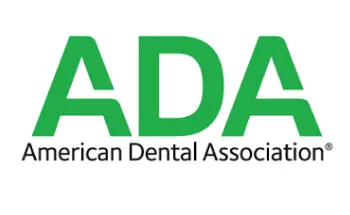ADA: American Dental Association

ADA, the American Dental Association, is a nonprofit organization that develops and publishes standards for the dental industry. Headquartered in Chicago, United States, ADA standards are present in every aspect of the dental industry in the United States. ADA standards are agreed upon by a team of 40 voting members and 60 working groups. ADA also serves as the administrator for the U.S. TAGs (United States Technical Advisory Group) to ISO/TC 106 (International Organization for Standardization/Technical Committee) and to all of its subcommittees. Standards from ADA are available both individually, directly through the ANSI webstore, and as part of a Standards Subscription. If you or your organization are interested in easy, managed, online access to standards that can be shared, a Standards Subscription may be what you need - please contact us at: [email protected] or 1-212-642-4980 or Request Proposal Price.
Below are ADA's best-selling standards. To find additional standards, please use the search bar above.
ANSI/ADA 99-2001 (R2013)
Athletic Mouth Protectors and Materials
This specification is for thermoplastic or thermosetting polymeric materials, with or without a polymeric shell, that are capable of being formed into an athletic mouth protector, either on a model of the teeth or in the mouth directly on the teeth. It lists the types and classes of mouth protectors and lists requirements for physical properties along with tests specified for determining compliance with those requirements It also specifies requirements for manufacturer's instructions and for packaging, labeling, and marking.
ANSI/ADA 132-2015
Scanning Accuracy of Dental Chair Side and Laboratory CAD/CAM Systems
This standard describes test methods used to evaluate the repeatability, reproducibility and accuracy of dental devices for 3D metrology. The standard is applicable to dental chairside and dental laboratory CAD/CAM systems. The scope of this document is not intended to include unique systems with other specific applications of 3D metrology in the dental field such as 3D computed tomography, magnetic resonance imaging and stereophotogrammetry.
ANSI/ADA 57-2000 (R2012)
Endodontic Sealing Materials
This specification is for materials used in endodontics within the tooth to seal the root canal space.
ADA TR 146-2018
CAD/CAM Abutments in Dentistry
CAD/CAM abutments have an anatomically correct emergence profile and restoration substructure specific to the patient (i.e. patient specific). This technical report provides references for test methods that can be used for assessing reliability, accuracy and reproducibility of patient specific CAD/CAM abutments designed for use with a manufacturer’s own implants or for use with implants from other manufacturers; as well as guidelines for standardization of future products. The abutment is individually designed by a laboratory or doctor to be attached to an implant by means of an abutment screw, dental cement or friction fit. This document provides on abutments where milling is done at a central milling facility, a dental lab, or by an in-office milling machine. Specific qualitative and quantitative requirements for freedom from biological hazard are not included in this document, but it is recommended that, in assessing possible biological or toxicological hazards, reference be made to ISO 10993-1 and ISO 7405.
ANSI/ADA 108-2009
Specification No. 108 - Amalgam Separators
This specification specifies requirements and test methods for amalgam separators used in connection with dental equipment in the dental treatment center. It specifies the efficiency of the amalgam separators in terms of the level of retention of amalgam based on a laboratory test and the test procedure for determining this efficiency. It also includes requirements for the safe functioning of the amalgam separator, for marking, and for instructions for use, operation and maintenance.
ANSI/ADA 120-2009 (R2014)
Powered Toothbrushes
This specification defines requirements and test methods for the physical properties of powered toothbrushes in order to promote the safety of these products for their intended use. Specifically excluded are other types of powered oral hygiene devices (such as powered interdental brushes) and manual toothbrushes.
ADA 108-2009 Addendum-2011
ANSI/ADA 108-2009-Addendum: 2011
This Technical Addendum addresses inconsistencies in ISO 11143-2008 Amalgam Separators by providing corrections to the wording in Paragraph 9.3.2.3.3 and an alternate test method corresponding to Paragraph 9.3.2.6.1 in the ANSI/ADA 108-2009 document.
ANSI/ADA 111-2019
Adhesion Test Methods to Tooth Structure
This standard gives guidance on substrate selection, storage, and handling as well as essential characteristics of different test methods for quality testing of the adhesive bond between restorative dental materials and tooth structure, i.e. enamel and dentine. It includes a tensile bond strength measurement test, a test for measurement of marginal gaps around fillings, a microleakage test, and gives guidance on clinical usage tests for such materials. Some specific test methods for bond strength measurements are given for information in Annex A.
ANSI/ADA 122-2007 (R2013)
Dental Casting and Baseplate Waxes
This Specification is applicable to dental casting wax and to dental baseplate wax. It specifies the classification of, and requirements for, dental casting wax and baseplate wax together with the test methods to be employed to determine compliance with these requirements.
ANSI/ADA 130-2013
ANSI/ADA Standard No. 130 Dentifrices - Requirements, Test Methods and Marking
This standard specifies requirements for the physical and chemical properties of dentifrices and provides guidelines for suitable test methods. It also specifies requirements for the marking, labelling and packaging of dentifrices. This standard applies to dentifrices, including toothpastes, destined to be used by the public on a daily basis with a toothbrush to promote oral hygiene. Specific qualitative and quantitative requirements for freedom from biological and toxicological hazards are not included in this standard. These are covered in ISO 7405[1] and ISO 10993-1[2].





